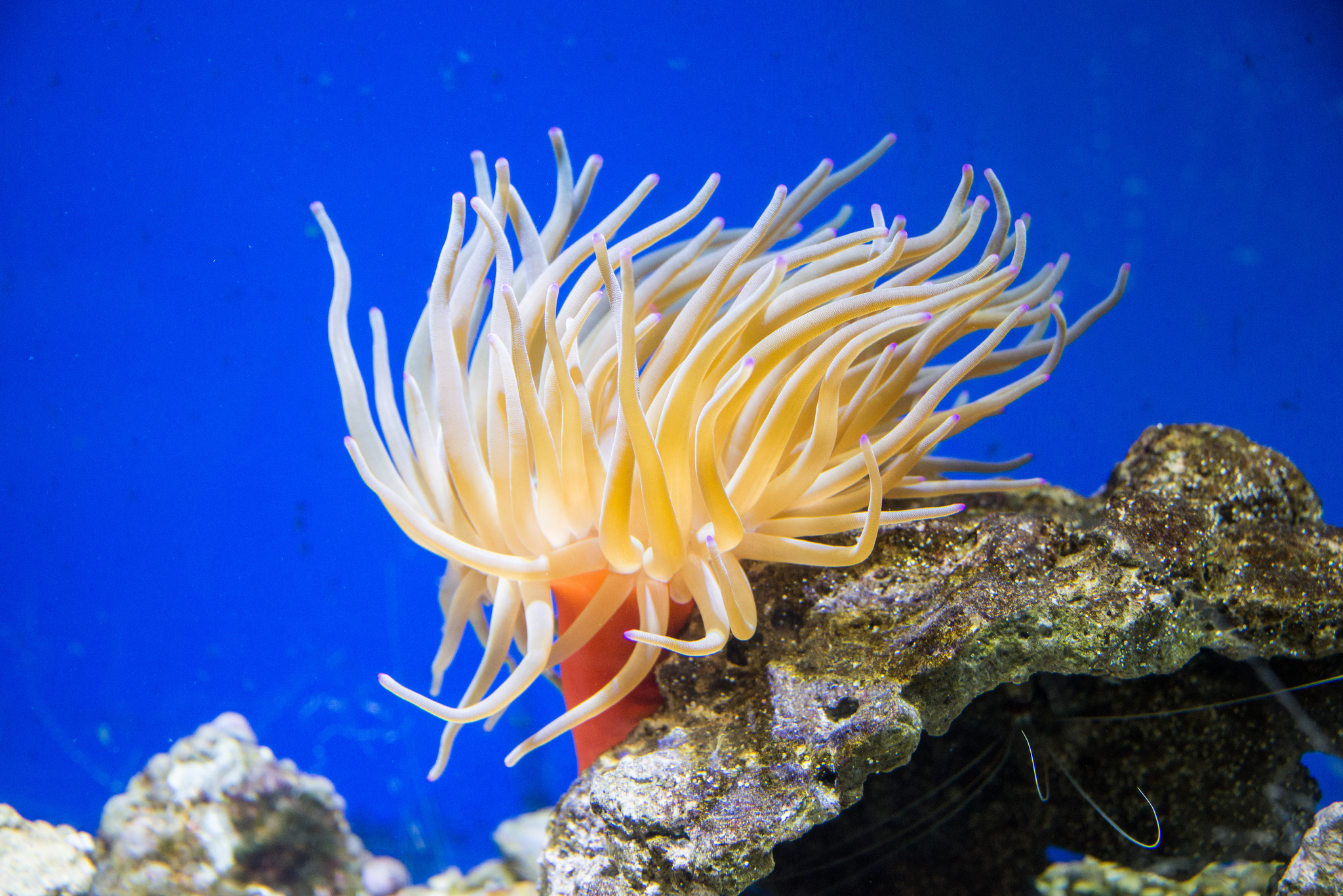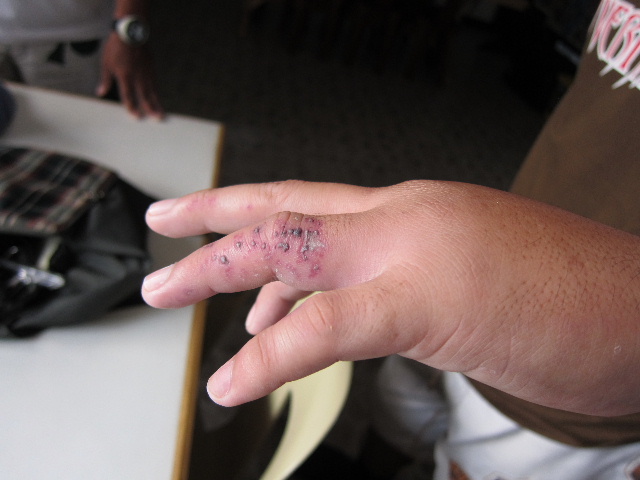
Caribbean Giant Sea Anemone (Condylactis gigantea). Credit: Kent Kanouse
There is a great disparity in the relative strength of sea anemone stings. Many of the smaller species are quite harmless to man (e.g. Phymanthus, Exaiptasia), while some of the larger-bodied groups can produce painful blisters (e.g. Stichodactyla, Cryptodendrum). The Giant Caribbean Anemone (Condylactis gigantea) is one of the most abundant species in the aquarium trade and generally considered to be a fairly benign creature; however, for an unlucky few, the experience of touching it has been far more severe.
Upon physical contact, the tentacles of Condylactis are curiously sticky and capable of causing a bit of itchy redness on delicate parts of the skin. I myself have been stung countless times by this creature and lived to tell the tale, but the same cannot be said for one unfortunate diver whose shoulder brushed against one of these anemones in the U.S. Virgin Islands.
The following incident was reported in the journal Annals of Internal Medicine: A healthy 28 year old man was flown to a Miami hospital in a comatose condition. The trouble started within just 15 minutes of exposure to the tentacles of a Condylactis anemone. Swollen vesicles appeared at the point of contact and an intense pain developed across his back and arms. He would spend the next 24 hours at the hospital, receiving intravenous fluids and an opioid pain reliever before being discharged.
The very next day he returned with complaints of weakness and lethargy. Tests found elevated levels of liver enzymes and his body showed jaundice-like symptoms. Over the next five days, his neurological condition deteriorated, eventually requiring the insertion of a breathing tube. During the following 72 hours, the patient grew increasingly unresponsive to stimuli. His brain had developed swelling, and his kidneys essentially stopped functioning. The next day, doctors attempted to transplant a new liver and kidney to the rapidly dying patient, but this proved to be too little, too late. Necropsy showed “massive necrosis” of the liver.
Unfortunately, we’ll never know precisely why this one diver had a fatal reaction to the venoms of Condylactis gigantea when so many others are unaffected, but this isn’t the only example of someone having been significantly debilitated. A Florida man reported similar (albeit less severe) symptoms that lasted for more than 16 days, and no doubt many others have experienced the same without their cases having made it into the medical literature. This is a risk that every aquarist should be aware of before they consider purchasing this anemone, but don’t expect to find any warning labels at the fish store. As is often the case in the aquarium trade, this responsibility is left to the consumer to figure out.
And this is by no means the only actiniarian to be wary of. The Mimic Anemone (Phyllodiscus semoni) is known to have caused acute renal failure and severe dermatitis. The Hellsfire Anemone (Actinodendron plumosum), the Snake Anemone (Actinostephanus haeckeli), and the Armed Anemone (Dofleinia armata) are reported to cause extremely painful stings and persistent ulceration of the skin. And the Carpet Anemone (Stichodactyla haddoni) has been implicated in causing prolonged neurological damage and even anaphylactic shock in aquarists. With anemones, it’s buyer beware…

Damage caused by the infamous Hellsfire Anemone (Phyllodiscus semoni). Credit: Uncle Diver Drift
- Garcia, P.J., Schein, R.M. and Burnett, J.W., 1994. Fulminant hepatic failure from a sea anemone sting. Annals of internal medicine, 120(8), pp.665-666.
- Hansen, P.A. and Halstead, B.W., 1971. The venomous sea anemone Actinodendron plumosum Haddon of South Vietnam. Micronesica, 7(1), pp.123-136.
- Mizuno, M., Nishikawa, K., Yuzawa, Y., Kanie, T., Mori, H., Araki, Y., Hotta, N. and Matsuo, S., 2000. Acute renal failure after a sea anemone sting. American Journal of Kidney Diseases, 36(2), pp.e10-1.
- Nagata, K., Hide, M., Tanaka, T., Ishii, K., Izawa, M., Sairenji, T., Tomita, K. and Shimizu, E., 2006. Anaphylactic shock caused by exposure to sea anemones. Allergology International, 55(2), pp.181-184.
- Villano, J.H., O’Connell, C.W. and Clark, R.F., 2015. Prolonged, reversible neurologic symptoms after carpet sea anemone envenomation in a pet store worker. Clinical Toxicology, 53(2), pp.137-137.









Dr. Rowlett – this is a long shot but here goes: I work at a facility which has a 225 gallon display reef tank in the lobby and I take care of the inhabitants. Lately I’m noticing my Condylactus gigantea lying limp and fully-extended in the mornings after a full night of darkness, followed by a gradual retraction of the base column during the day, until its nearly fully retracted and in its normal (i.e upright tentacles waving) orientation. It DOES take food when I spot feed it, although not quite as aggressively as it has been feeding for the last three to four years in which I’ve been feeding it. Have you ever seen or heard of a Condy behaving in this way, and if so, do you have any observations or suggestions for us?
Thank you, sincerely
Greg Mactye Facility Coordinator
Animerge Veterinary Hospital, Raritan NJ
[email protected]
Mime does the exact same thing